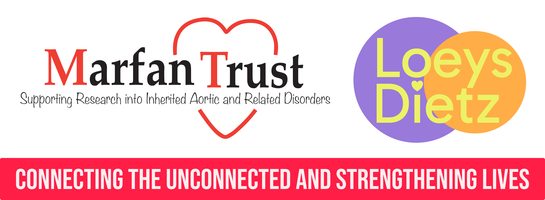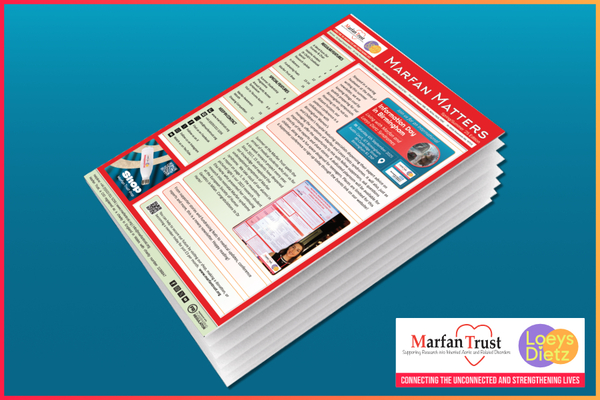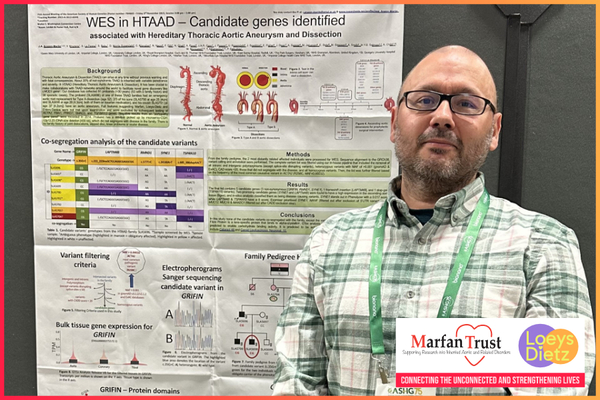Navigating the often-tribal path of adolescence is a hormone-fuelled rite of passage. It is a turbulent time of peer pressure and self-discovery, one that can be made harder when you stand out, literally, from the crowd, and have potentially hampering physical issues. We were approached by the relative of a tall teenage student, B. B has Marfan syndrome. In response to B’s difficulties in adjusting at school, the relative wrote a set of helpful recommendations, ones that will ease the path for ‘B’ to both study and socialise. Please do write in with any recommendations you may have of your own.
Pupil specific proposed action plan to support school accessibility and attendance
This document could be used to feed into a formal School Education, Health and Care Plan.
Date: ……………………
Pupil Name: ………….. ………………….
This proposed plan is for use as a discussion tool with the school and should be updated regularly. It is understood that some of these suggestions are already in place. There is a summary of the recommendations listed at the end
B is a sensitive, kind, enthusiastic and highly intelligent young person. Focusing on and developing his strengths is likely to be the key to B’s success at school. He loves cooking and modern history for example.
He also has Marfan Syndrome, a connective tissue disorder which can affect all the systems of the body caused by over elasticity and weakness of tissues. Most commonly associated with excessive height, it can also affect, the skeleton, joints, heart, vascular system, lungs, eyes and nervous system. It manifests itself differently in each person affected.
B does not need an education support assistant but would benefit from a dedicated key coordinator. This person would need a quite limited, but flexible time allocation, to co-ordinate and communicate any particular needs to all concerned on a day-to-day basis and to ensure new members of staff are informed.
In relation to the suggestions outlined below, it is imperative that adults respect B’s wishes rather than question them. Otherwise he has to battle every day to ensure he is in a comfortable place, without standing out more than is necessary and is able to cope. If it seems as if he is taking advantage of a situation, this is rarely if ever the case. He has a lot to contend with and wants to do his best.
The measures outlined below, need to be as low key as possible with B quietly taking advantage of the following proposals when he sees fit.
The Marfan Trust has published a booklet for teachers. It is important for all B’s teachers to read it so that they understand the extent of the issues B may be facing, although not to discuss them with him. For B, these include experiencing symptoms involving nerves, skeleton, joints, digestion, cardio- vascular system, and dental formation.
Height, joint pain and vision:
Normal chairs and unsuitable desk heights do exacerbate discomfort.
Furniture tailored to suit B’s needs in all his school rooms should be provided to help overcome this. Rise and fall desks and worktops might be one solution. There may be other equipment adaptations that the school thinks would help and these should be discussed with their dedicated coordinator.
Because of poor vision and tall stature, it is best to seat him near the front but at the side of the classroom so he does not block the view of shorter pupils behind.
Tiredness, headaches and pain
B is on permanent medication to reduce his blood pressure which increases his tiredness and reduces his stamina. His frequent headaches are caused by complications of the condition.
B would benefit from a discrete place to lie down and rest during the day when needed.
B needs to have suitable pain medication with him, in permitted quantities, to take as he sees fit. This ensures his pain management is low key and not public.
Digestion
B can sometimes experience discomfort from digestion and will benefit from a meal plan which enables him to eat more frequent, smaller meals designed to provide a balanced diet (instead of eating little at a main meal and filling up on high carb high sugar foods later). Sandwiches at morning break and perhaps fruit and cheese in the mid-afternoon for example
Psychosocial
B is having to come to terms with a host of issues affecting how he feels and functions, physically and mentally, as well as the prospect of future unknowns. This understandably impacts on his mood from day to day. At times B feels a need to withdraw from social contact and spend time alone. He is sometimes not comfortable with transitions and teachers should be prepared for this. This may be to do with uncertainty/anxiety regarding how he will cope.
B is also conscious of being much taller than his peers and, although socially quite well adjusted, can read often innocuous comments by others as negative, resulting in low self-esteem and low mood. Having an adult on hand to talk to when this happens may help him. Non-specific conversations by teachers with other pupils which deal with bullying/teasing and respect for, and celebration of differences may help his peers to be more sensitive without singling him out.
Even gentle teasing or comments from teachers may be perceived negatively by B particularly in relation to height and should be avoided.
It should be up to B alone to choose whether to share or discuss his condition with anyone.
B’s height and advanced verbal skills lead adults to see him as older than he is. He is still quite young, often the youngest in his class with a late July birthday, and needs to be treated as such, otherwise expectations of him can be too advanced and can cause distress or undue pressure.
Hypermobility and writing
B’s hypermobile hand joints make it difficult for him to write and his handwriting is shaky. It is unnecessary and potentially damaging for anyone to comment on his handwriting as he does his best. Typing may be a good option for exams if it becomes practiced and his usual mode of writing in class. Allowance should be made and when it comes to tests and examinations extra time could be allocated, even though he may not need it every time. Formal applications for additional time or other adaptations during GCSE’s may be required when he is older.
Sport
B is very keen on sport, particularly football, but is often unable to take part for long or to engage in high impact or contact sport. His hypermobile foot joints and long flat feet also make his gait unwieldy and slower than average. Distance or cross-country running is not advised and even shorter distances can be uncomfortable. Enabling him to play for shorter periods during a game or to become the commentator, (at which he is talented) may help him to join in when he is able. Like all of us he has good and bad days.
Time off School
B has to take time off school for very frequent medical appointments, often as far afield as London or Birmingham.
He also has days when going into school or staying for too long is just too difficult. His wish is always to go to school but sometimes cannot manage it. For this reason, a plan is needed to enable him to catch up at home with key content supplied as written material for English, Mathematics and Science for example or subjects he is passionate about.
Medical emergency at School:
All staff including non-teaching staff must be aware of procedures outlined below, including the nearest casualty department during school outings.
All staff dealing with B should be aware of, but not unduly alarmed by, the medical complications which would require rare emergency care: (Based on the Marfan Trust school doc)
1. Aortic dissection. Severe chest pain needs immediate referral to a hospital and heart specialist. This seldom occurs in childhood, but occasionally in the years of rapid pubertal growth in secondary school, ages 14-18.
2. Collapsed lung. Severe breathlessness, turning blue with possible severe chest pain may indicate a collapsed lung and requires immediate hospitalization.
3. Glaucoma. Dislocated lens with acute eye pain can increase pressure within the eye and requires urgent hospitalization and treatment to avoid blindness
4. Joint Dislocations: Knees and shoulders are the most frequent due to loose ligaments. Requires hospital treatment
A letter from a doctor giving permission for trips and a letter from parents relieving the school of legal responsibilities may be provided. It must be stressed these complications are monitored to mitigate against their occurrence which are rarely sudden and should not preclude S from school trips.
TO CONCLUDE
B is a normal boy with normal prospects for the future and should be primarily seen as such. With sensitive informed management from all concerned he should lead a happy and fulfilled school life.
Summary of recommendations
1. Part time dedicated coordinator/ communicator to ensure B’s needs are met each day.
2. Remember to treat B according to his age despite his seeming older due to his height and verbal skills
3. Adapted furniture /equipment and position in relation to the whiteboard, wherever needed.
4. All staff to read this report and the Marfan Trust Teacher booklet for schools to increase understanding.
5. Respect B’s wishes for rest or retreat and a place to do so.
6. Maintain a low-key approach to any adaptations to protect B’s self-esteem.
7. B to manage his own medication discretely.
8. Be careful to treat him as his age despite him appearing older.
9. Support his need to eat smaller meals more often, some of which he could bring.
10. Be aware of his perception of being bullied due to his height, conduct generalised discussions with pupils to mitigate this and ensure that no member of staff inadvertently teases him or comments upon his height.
11. Have some key person with whom he can talk about his feelings regarding any incident if needed.
12. Be aware that B is not always comfortable with transitions which need to be handled sensitively. This is likely to be due to fear of being able to cope.
13. Ensure everyone understands that writing neatly is difficult for him and may be slow, help him to learn to type instead.
14. Focus on and encourage his strengths and interests.
15. Adapt sports lessons to enable him to participate part of the time if necessary and ensure he is not asked to run too far or do contact sports.
16. Ensure everyone is aware of the rare potential for medical emergency and familiar with the symptoms and necessary action listed above.









